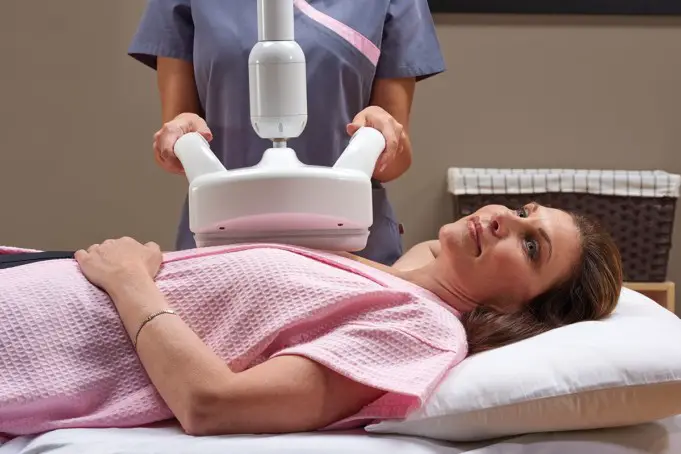Breast ultrasound is a painless imaging test that is used to examine the internal structure of the breast and provide a real-time image. Breast ultrasound can help to diagnose conditions such as breast lump and ascertain the damage caused by other abnormalities that were found during mammography or MRI(Magnetic resonance imaging) scan.
Ultrasound uses sound waves, not radiation and can help to detect abnormalities in the breast which may be solid and non-cancerous such as cancerous tumors, cyst or a lump or fluid-filled abnormalities such as a benign cyst.
Uses of Breast Ultrasound
Since ultrasound scan are used to produce real-time images of the internal organs/structure, breast ultrasound can be used to;
- Guide breast biopsy: A guided breast biopsy is performed when an ultrasound scan reveals a breast abnormality. Since ultrasound produces real-time images, it is usually done before biopsy in order to guide the biopsy procedures and to determine the method of biopsy to be used.
- Determine the Nature of Breast Abnormality: The major use of breast ultrasound is to help a physician diagnose breast abnormalities such as lump that was detected during a physical exam or test.
- Supplement Cancer Screening: Breast ultrasound, as well as MRI scan, can help detect cancers that may not be visible to mammography. Breast ultrasound can be used to characterize breast biopsy abnormalities that were seen on Magnetic Resonance Imaging(MRI).
Breast ultrasound can be used as a screening tool for women;
- Who were unable to undergo an MRI exam and are at high risk for cancer.
- Women whose breast density has increased causing the breast to have less fatty tissue and more of connective and glandular tissue.
- Who are pregnant.
Who Performs the Breast Ultrasound
Breast ultrasound is performed by an ultrasound technologist or technician. A diagnostic radiologist or radiologist is a medical professional who is trained to interpret ultrasound images.
They specialize in interpreting medical imaging tests including MRI scans, ultrasound, and CT scans.
Procedures of Breast Ultrasound
Breast ultrasound is performed in a hospital. The procedure of the breast ultrasound takes less than 30mins generally. Steps include;
- Lying down on a table in the ultrasound room which usually has dark or dimly lighted, to enable easy reading of the ultrasound images on the ultrasound screen.
- A special water-based gel will be applied to the area under examination to reduce friction and help the transducer slide across your skin. It is the transducer that sends and receives soundwaves to produce the image on the ultrasound screen.
- The technologist will move the transducer back and forth on your belly while looking at the screen.
- The technologist will occasionally press the transducer down. While he’s doing this, you might be asked to hold your breath or change your position for a short while. This will enable the technologist to have clear imaging that will help diagnose your condition.
- The water-based gel is then wiped off from your skin.
- You may be asked to wait for a short while. Then the diagnostic radiologist will check if the imaging was complete.
- After an imaging test, the patient is usually asked to go home.
Benefits of Breast Ultrasound
Some known benefits of breast ultrasound are listed below;
- It is not painful although it may be uncomfortable temporarily.
- It is noninvasive which means that there are no injections or needles.
- It can help to detect lesions in women especially those with dense breasts.
- It is less expensive and easy to use compared to other imaging methods.
- It can help to classify lesions that cannot be adequately interpreted through mammography.
- It is widely available compared to other imaging methods.
- It is completely safe and it uses sound waves, not radiation.
- It is a good tool for guiding biopsy as it produces real-time imaging.
- It provides a more clear picture of soft tissues that did not show up clearly on the x-ray.
Risks/complications of Breast Ultrasound
Although standard ultrasound diagnostics do have a known harmful effect on the human body, and interpretation of the ultrasound may lead to other procedures such as biopsy, aspiration, and followups.
Limitations of Breast Ultrasound
Though the ultrasound scan is painless and has no known harmful effect on the human body, it has a few limitations. These limitations include;
- Some calcification seen on mammography is not seen on ultrasound.
- Although it is a breast imaging method, it does not replace mammography.
- Other imaging methods such as biopsy may be recommended if the suspected abnormality in the breast is cancer or not.
- Some hospitals may not offer ultrasound scans even for women with dense breasts.












